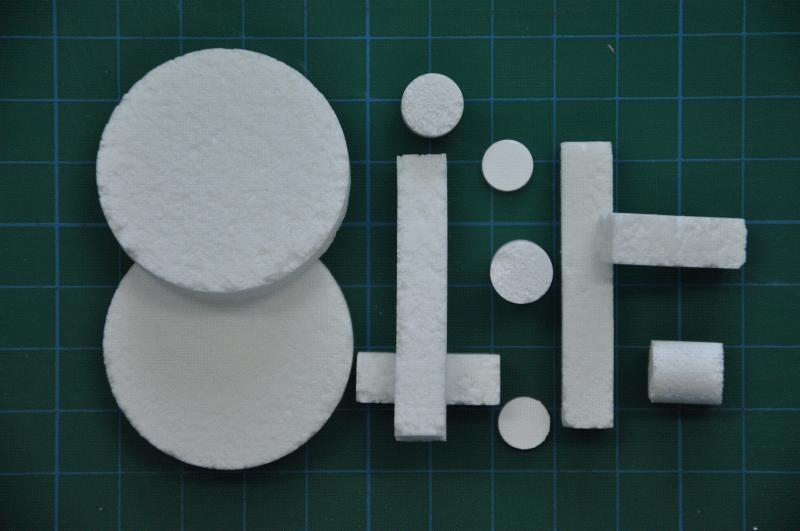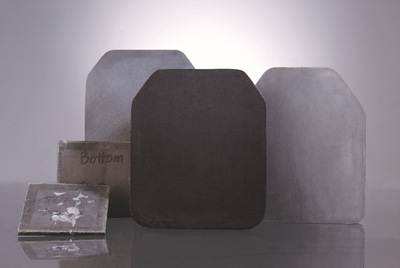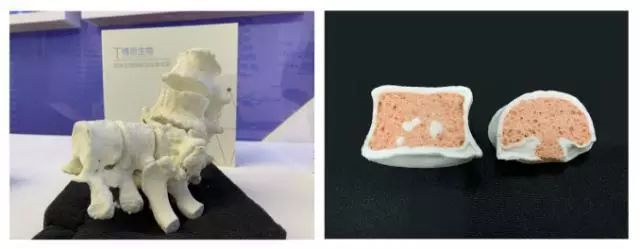1. Clinical application of bioactive glass
The most representative bioactive glass used in clinical applications is the glass with the composition (wt%) Na2O 24.5, CaO 24, SiO2 45, and P2O56.0 developed by the Americans (ie, bioglass 45S5). This kind of glass is not only harmless to the human body and has good affinity, but also can be firmly combined with natural bones. The combination mechanism can be explained as follows:
Bio-glass is implanted inside the human body to dissolve Na+ from the surface of the glass to form a silica-rich sol layer. On the natural bone side of this sol layer, bone growth cells multiply and become collagen fibers. With the dissolution of Ca2+ and P5+, the bone The hydroxyapatite crystals are formed around the collagen fibers and are bonded together. That is, the combination of the active apatite layer and the organic substance shows the firm bonding performance of the active glass and the bone.

45S5 Bioglass
Clinical studies have shown that bioactive glass as an artificial bone material is stable when embedded in tissues for a long time. The 45S5 biological glass block is placed in the animal body for a long time without mechanical damage or interface damage.
Currently, materials that can be firmly combined with bones and have higher mechanical strength and less fatigue than bones are being explored. The research direction is: ①Reinforce by precipitating other crystals in glass-ceramics from which apatite is precipitated; ②Compound apatite polycrystals with inorganic fibers for strengthening; ③Glass, glass-ceramics or phosphorus containing CaO and P2O5 Greystone polycrystals coated on alumina or stainless steel and so on.
2. Clinical application of hydroxyapatite ceramics
The results of animal experiments confirm that hydroxyapatite is safe in vivo and has a good affinity with bone tissue and skin tissue. On this basis, it has been clinically applied.
At present, hydroxyapatite has been used in artificial tooth roots, bone defects, repair and filling of brain surgery, etc.; used in the manufacture of ear-ossicular chains and plastic surgery materials.
In addition, hydroxyapatite ceramics are also used in medicine as a drug release carrier implanted in the human body during treatment-artificial bone nucleus, and used in the treatment of bone tuberculosis. This application is mainly to use hydroxyapatite ceramics (artificial bone core) as the anti-tuberculosis drug-rifampicin carrier, so that the hydroxyapatite ceramics containing the drug are implanted into the tuberculosis lesions, and the drug is continuously released to produce high local concentrations. Killing tubercle bacilli, to achieve the purpose of controlling residual infection and preventing recurrence. This method, due to the low concentration of the drug throughout the body, can prevent the side effects of the drug.
The hydroxyapatite artificial bone core used as a drug release carrier requires evenly distributed interconnected pores. When the hydroxyapatite artificial bone core filled with powdered medicine is put into the body, because the body fluid wets the artificial bone core, under the action of capillary force, the body fluid can enter the core and dissolve the powdered medicine. Due to the drug concentration gradient inside and outside the nucleus, the high-concentration drug solution diffuses to the low concentration, the extra-nuclear drug solution is continuously absorbed, and the intranuclear drug solution continues to ooze out until the drug is completely released.
This method can be used to treat cases of thoracolumbar tuberculosis, sacral joint tuberculosis, and femoral tuberculosis, with good curative effect.
3. Biological characteristics and applications of tricalcium phosphate ceramics
The composition, structure, and physical properties of tricalcium phosphate are similar to hydroxyapatite, so its biological properties such as biocompatibility and biocompatibility are also very similar to hydroxyapatite. On the basis of animal experiments, clinical applications have also been carried out. Because its solubility is greater than that of hydroxyapatite, that is, its bone replacement speed is faster. Therefore, the initial application is to make a porous body for filling bone defects or as a skull. After being implanted in the body, new bone slowly enters the pores of the sintered body, and will eventually be replaced by its own bone. That is, tricalcium phosphate has the property of inducing the growth of new bone and can be swallowed by mesenchymal cells and gradually disappear from the implantation site. But at the beginning of the degradation process, its strength is lower (lower than metal and non-degradable materials). When completely replaced by its own bone, its function is better than that of metals and non-degradable materials.
Recently, the application of coating TCP on metal Ti and Ta as artificial bone roots has been carried out. The center part is metal titanium, and the outside is a composite material of TCP ceramic and polycarbonate. In addition, powdered TCP is also used as a filling material for bone defects caused by periodontal disease.
Declaration: This article is provided by CERADIR™ users or obtained from Internet, the content does not represent the position of CERADIR™. We are not responsible for the authenticity/accuracy of the article, especially the effects of the products concerned. This article is for study only, it does not constitute any investment or application advice. For reprinting, please contact the original author. If it involves the copyright and/or other issues, please contact us and we will deal with it asap! CERADIR™ has the interpretation of this declaration.







